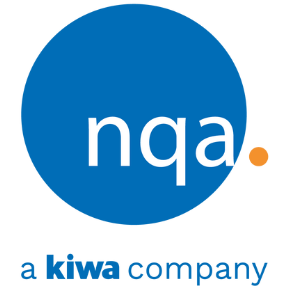ISO 13485: Quality Management System for Medical Device Manufacturing
What is ISO 13485?
ISO 13485 is the medical industry's optimal medical device standard, which ensures that all medical devices meet the proper regulatory compliance laws and customer needs. ISO 13485 certification is a valuable credential put in place to keep professionals and customers safe in clinics, hospitals and other medical settings.
ISO 13485:2016 is based on the ISO 9001 process model approach and is a management systems standard specifically developed for the manufacture of medical devices. Its primary objective is to facilitate harmonised medical device regulatory requirements. The standard contains specific requirements for manufacture, installation and servicing of medical devices and calls for:
- Implementation of a Quality Management System with several enhancements
- Risk Management approach to product development and product realisation
- Validation of processes
- Compliance with statutory and regulatory requirements
- Effective product traceability and recall systems
This standard allows companies to reduce safety and legal risks while creating more economical work environments. As an internationally recognised standard of quality and safety for medical device manufacturing, having ISO 13485 certification helps companies get recognised as more reputable, trustworthy providers. The most recent version of ISO 13485 is reviewed every five years and revised according to the new requirements and needs of the industry.
ISO 13485 has seen a 33.1% increase in worldwide certificates in 2020, showing the growth and importance of UKAS accredited certification in recent times. Statistics straight from the most recent ISO Survey.
Looking to implement an ISO 13485 management system? Not sure where to start? Take a look at our ISO 13485 Implementation Guide here.
How To Get Certified To ISO 13485
Helps you with
- Quality Control
- Risk Management
- Legal Compliance
- Traceability and Recall
- Process Improvement
- Product Improvement
- Operational Efficiency
Benefits of ISO 13485 Certification
Customer satisfaction
Deliver products that consistently meet customer requirements and a service that is dependable and can be relied on.
Reduced operating costs
Continual improvement of processes and resulting operational efficiencies mean money saved.
Improved stakeholder relationships
Improve the perception of your organization with staff, customers and suppliers.
Legal compliance
Understand how statutory and regulatory requirements impact your organization and its customers.
Proven business credentials
Independent verification against a globally recognized industry standard speaks volumes.
Ability to win business in regulated sectors
Certification helps to win business – particularly where procurement specifications require certification as a condition to supply in a highly regulated sector.
Improved risk management
Greater consistency and traceability of products and services means problems are easier to avoid and rectify.
Who Is ISO 13485 Applicable To?
ISO 13485 applies to organisations of all types and sizes, except where explicitly stated otherwise. ISO 13485 contains requirements that are essential for any organisation operating at any tier in the medical device and pharmaceutical supply chain, including design, production, installation, storage, development and service.
ISO 13485 certification is especially relevant to manufacturers that wish to demonstrate applicable regulatory requirements and by organisations whose services support medical device manufacturers. These companies need to get certified to ISO 13485.
Is ISO 13485 Certification Right For Me?
ISO 13485:2016 is based on the ISO 9001 process model approach and is a management systems standard specifically developed for the manufacture of medical devices. Its primary objective is to facilitate harmonised medical device regulatory requirements.
Annex B of the ISO 13485:2016 standard includes a comparison with ISO 9001 for reference. Importantly, neither can be used to make a QMS that is automatically compliant to the other and both need auditing.
Further, there are many terms in ISO 13485 unique to medical devices. ISO 13485 also retained the role of a quality representative to top management, where ISO 9001 removed this in many aspects. Interestingly, ISO 9001 has a lot more requirements for monitoring external providers for performance than the old version, and this is something always required by ISO 13485.
ISO 13485 is also ideal for companies that provide parts and services for medical device manufacturers. The standard has requirements for traceability, identification, risk assessment, cleanliness and documentation of procedures, all of which position these enterprises to be strong sources for medical components. Since there are many regulatory requirements by which medical device manufacturers must evaluate and monitor their suppliers, the presence of ISO 13485 certification will help medical device manufacturers feel confident about working with these parts and services providers.
Apart from medical devices, businesses in the aerospace industry seek to get certified to ISO 13485 to diversify. Those with AS9100 are already set up to achieve ISO 13485 easily.
Facts About the Changes to ISO 13485
ISO 13485:2016 is a standard that focuses on the importance of the lifecycle of a medical device, including its design, development, production, storage, distribution, installation, servicing and final decommissioning. The standard is designed to assist organisations in focusing their management system and therefore practices on strengthening its risk management approach and meeting regulatory requirements. The following is a major revision of the ISO 13485:2016 standard.
- ISO 13485:2016 replaces ISO 13485:2003 and ISO 13485:2012. The revised ISO 13485:2016 was published on March 1, 2016.
- The standard is aligned with ISO 9001:2008 and not ISO 9001:2015. This misalignment is due to the revision of both standards being completed parallel to one another and because ISO 9001:2015 was determined to be unnecessary for medical devices.
- The changes were managed by the ISO technical committee 210, whose role it was to ensure that this quality management system standard remains fit for purpose. This update was necessary given developments over recent years with product-specific requirements outlined in device directives, such as the In Vitro Diagnostic Medical Devices Directive (IVDD) 98/79/EC and the Medical Devices Directive (MDD) 93/42/EEC.
- The standard is in line with the three European medical device directives, and the Z annexes at the front demonstrate where they align. However, the Medical Device Regulations are now live and replaced the medical devices directives in 2020 will replace the in-vitro diagnostic devices directives in 2022. Therefore, it is very likely that an amendment or corrigendum to ISO 13485:2016 will be released in the near future to incorporate two new Z annexes demonstrating how it aligns with the new Regulations.
- Manufacturers who get certified to ISO 13485 address regulations such as the EU Medical Device Directive and the EDU Medical Device Regulation while demonstrating a commitment to medical device quality and safety.
FAQs About the ISO 13485 Standard
Here are the answers to the most common questions about ISO 13485 certification:
What Does it Mean to be ISO 13485 Certified?
A higher level of quality control is achieved than ISO 9001 alone and closely matches the requirements for a QMS needed in the EU and UK medical device regulations. It also may carry more favor with medical device manufacturers if you have the standard as a supplier of components for them.
Is ISO 13485 Mandatory?
No, but as above, it closer meets requirements in the regulation and may better meet the requirements of your customers if they manufacture medical devices.
What’s the Difference Between EN ISO 13485 and ISO 13485?
EN is the Euro Norm, and virtually the only difference is the inclusion of the Z Annex, which highlights which of the regulation elements the standard helps to achieve.
What is a Class 3 Medical Device?
Class III medical devices are the highest risk level of medical devices and typically include devices that support or maintain life. These require a notified body to review the technical file and permit sale by application of a CE mark, amongst other activities.
Why is ISO 13485 Important?
To implement a QMS with a higher level of control, focus on safety and tougher requirements and standards which can benefit the manufacture of medical devices or components for them.
Steps to Certification
-
Step 1
Complete a Quote Request Form so that we can understand your company and requirements. You can do this by completing either the online quick quote or the online formal quote request form. We will use this information to accurately define your scope of assessment and provide you with a proposal for certification.
-
Step 2
Once you’ve agreed your proposal, we will contact you to book your assessment with an NQA Assessor. This assessment consists of two mandatory visits that form the Initial Certification Audit. Please note that you must be able to demonstrate that your management system has been fully operational for a minimum of three months and has been subject to a management review and full cycle of internal audits.
-
Step 3
Following a successful two stage audit, a certification decision is made and if positive, then certification to the required standard is issued by NQA. You will receive both a hard and soft copy of the certificate. Certification is valid for three years and is maintained through a programme of annual surveillance audits and a three yearly recertification audit.


